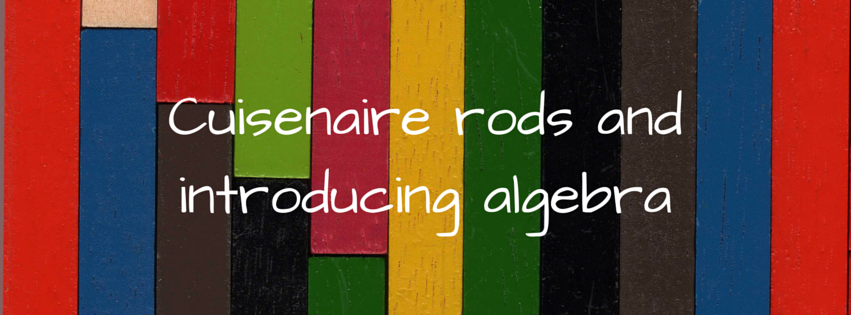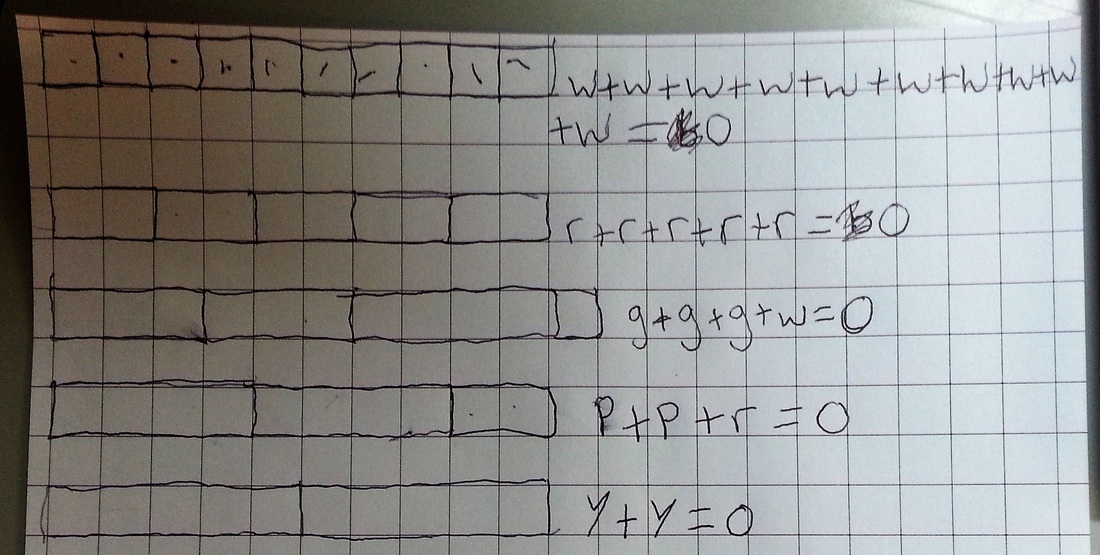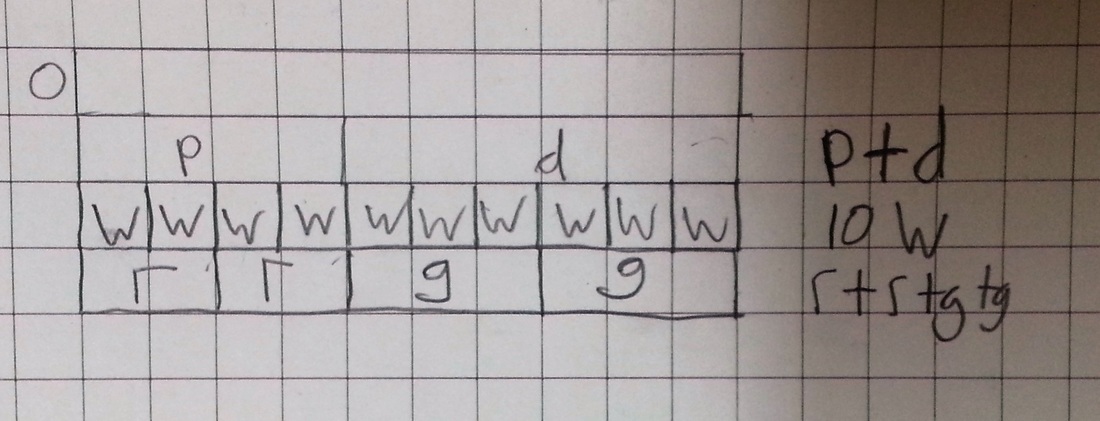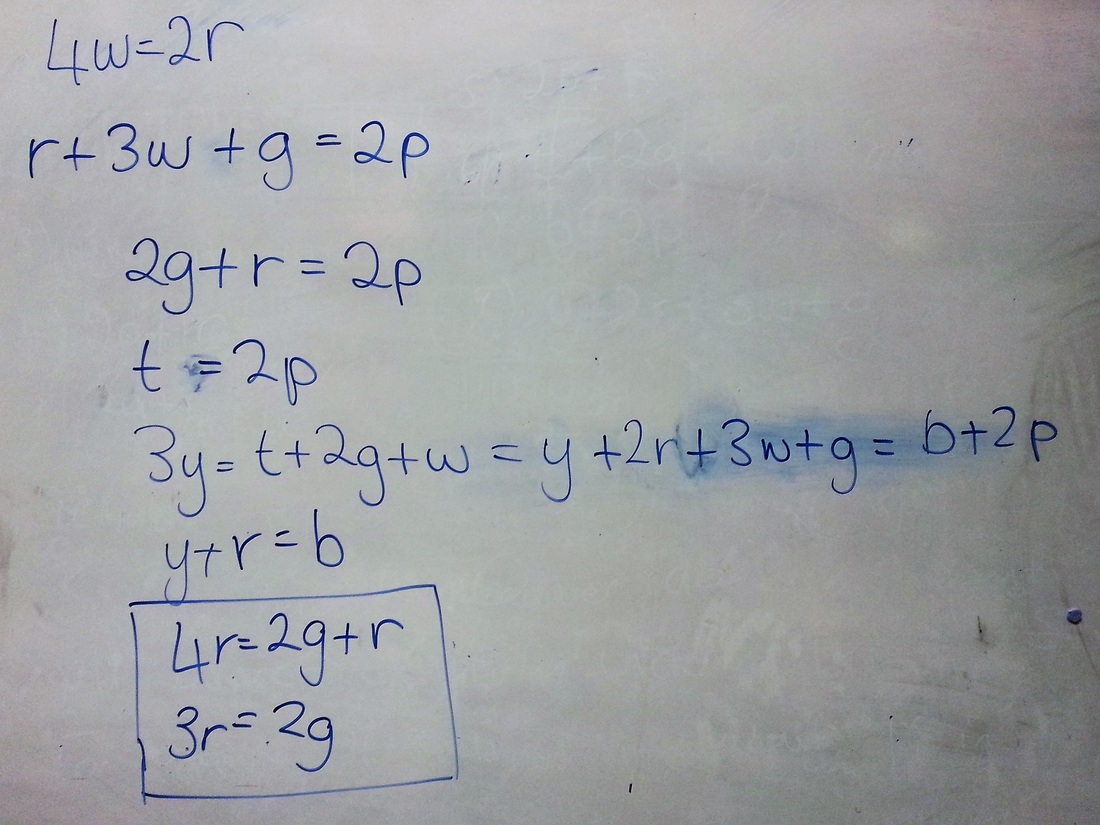We started by playing around with the Cuisenaire interactive from NRich - none of them had used the rods at primary, so I thought it was probably important that we got used to the basics. I started by building a couple of bonds to 10, then getting the pupils to explain what was there. They started by using numbers, referring to "the eight block" and "the two block", but quickly started describing them as "brown" and "red", and saying things like "brown plus red" quite naturally.
I gave them some square paper and got them to build some more expressions equal to one orange (i.e. 10). They would have happily done this all lesson if I'd let them!
Next up, we had a go at the task I'd written (here) - they found this really straightforward, but weirdly started introducing 1s in - so writing 2g + 1r instead of 2g + r. We had a quick chat about that.
(Header image: By Celcom, CC BY 3.0, commons.wikimedia.org/w/index....)




 RSS Feed
RSS Feed
